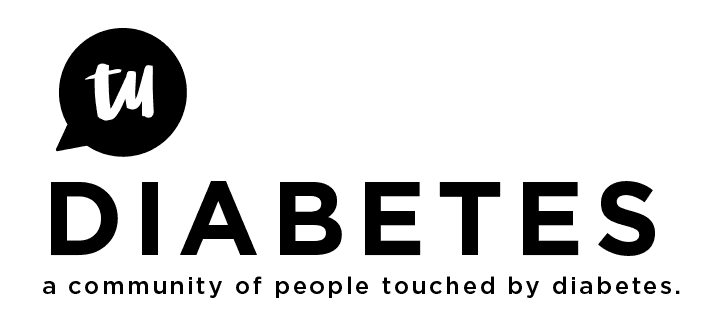Pizza is a topic that I see discussed a lot on Diabetes forums. Below is an an example of how I would bolus based off of using the TAG method…
Pizza Huts Meat Lovers Crust Stuffed Pizza (lets go BIG, right?)
(3 Slices)
Carbohydrates: 39g per slice x 3 = 117g
Fat: 26g per slice x 3= 78g
Protein: 22g x 3= 66g
Total Carbs 117g / 15 (standard bolus) = 7.8 units
Protein 66g x 40%= 26.4g +
Fat 78g x 40%= 31.2 g, 26.4 + 31.2 = 57.6g/15 = (squared bolus)= 3.9 (rounded up) units over 4 hours
TAG = 261g
7.8 units standard bolus (carbs in meal)
3.9 units squared/extended (fats and protein) over 4 hours
Why not use a formula that has some structure?..Wild A$$ Guessing your way through life is no way to live. Give TAG a try, what do you really have to lose?. I (or a few other TAG members here) would be more than happy to explain the equation up top, I know it looks a little overwhelming.
Good luck!
My one lurking question is always how long. There has to be some formula for it. carbs=2 hours, protein=4 hours, and fat = 10 hours generally speaking. You can subtract the carbs for the instant bolus, but the square / extended is the kicker. Why 4 hours? the bulk is of glucose is in the protein?
Also, your calcing fat and protein @ 40% each, I was under the impression protein was closer to 60% and fat closer to 10% (glucose extrapolation). Are those numbers your specific measurement? How did you calc that out?
I feel bloated just looking at that!
and I made homemade pizza tonight… no where near 261g TAG for 3 slices  Yay for lots of veggies!
Yay for lots of veggies!
Hi there -
As with so many things in the world of diabetes, we are all different and your mileage may vary. To find what worked for me, I started with the basics (100%/60%/10%) and then adjusted for me as follows:
carbs = 100% (immediate)
protein = 40% + fats = 10% ---- length of time, for me, depends on the ratio. High proteins would be in the 2 to 2.5 hour range, while high fat content might be 3 to 4 hours.
Here is the amazing thing, when you learn the percentages & time right for you and your metabolism - there is nothing like TAG to keep you sailing along smoothly.
You might want to pick something less, well, exciting than pizza - but do try it out!
Thanks Cheri. Im actually a long time TAGger as well, just like to know why others do (and how they arrive) at the computations they do. Your post is exactly what I was looking for as an explanation. Thanks!
You are very welcome! I might add that the reason I use the 10% for fats is that I am highly insulin resistant. Through experimentation, I found that an extremely low carb/high protein & fat diet did not work for me (fat=pounds for me, even with minimal carbs). So I follow a diet that is moderate carbs (all complex), moderate protein, and low fat. If I followed a diet higher in fat, I might use Ricardo and Danny’s formula.
Cheri
Hi OneSaint,
As Cheri stated, we are all different. I know the textbook answer shows different percentages for protein and fat conversion to glucose, but it just did not work for me. I started making progress with TAG when I stopped trying to fit myself into a formula that someone else came up with and instead started listening to my body and finding what works for me. I re-framed the goal as “how do I bolus for high protein/ fat meals and prevent excessive spiking” instead of seeing the goal as “how do I bolus for 58% proteins and 10% fats”. The change made a big difference for me.
Being of a mathematical mind, I see TAG as a 2 variable equation.
- What percentage of protein and fat will be converted to glucose. (Most of us determine the TAG percentages through trial and error.)
- 2. What is the rate of that conversion process
The rate of conversion determines how long you set your Square Wave/ Extended Bolus. If you set the Square Wave for too short a period of time, you will bring too much insulin on board too quickly before the protein/ fats can be converted to glucose. In this case you would suffer a hypo before the end of your Square Wave. If you set the Square Wave for too long a period of time, you will spike excessively within an hour or two of your meal, and eventually reach target after the square has stopped working. In the case of excessive spiking, the protein/fat is being converted to glucose quicker than your square wave is bringing insulin on board.
For my metabolism and when I am close to target BG, I find that bringing the square on board at a rate of about 1 -1.2 units per hour will match my metabolism. This means that if I have to take 4 units to cover my proteins and fats, I would square/ extend for 4 hours. Cheri;s alternative of having rules of thumbs for various protein and fat combinations will also work.
You will know if you have your TAG percentages set properly if you arrive at target BG after the carb bolus and the square/ extended bolus are completely exhausted. You know if you have your rate of delivery (square/ extended bolus) set properly if you prevented hypos and spikes during the TAG duration.
Ricardo -
I LOVE your yin to my yang - your scientific mind and my intuitive nature 
And your communications are always so elegant and helpful.
Cheri
Thanks much Cheri.
You, Danny and I are good TAG team partners. 
